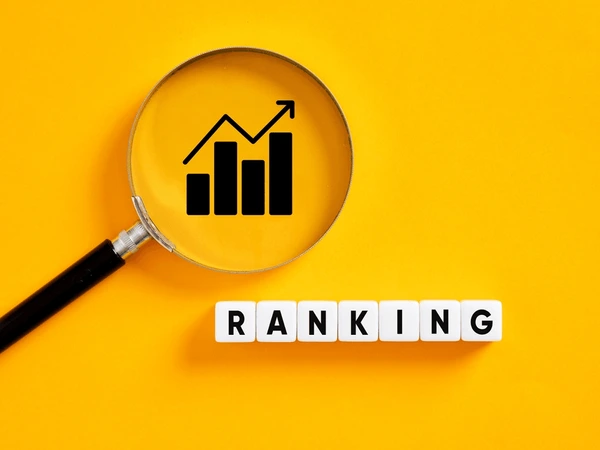Howdy! Google’s algorithms are like a complex maze. They sort through billions of pages to give users the best, most relevant results. It’s not magic, but it does take a strategy. This guide will show you how to get higher rankings on Google.
On-Page SEO: Your Secret Weapon for Instant Rank Boosts
Want to see your site jump up the rankings quickly? On-page SEO is your best bet. It’s fast, and the results can be seen in just days.
Frontload Your Keywords: The Golden Rule
Put your target keyword at the very beginning of your title tag. This is known as “frontloading,” and it signals to Google what your page is all about. The closer to the start, the better. It also helps users quickly understand your page’s topic when they are skimming search results.
Go Long or Go Home: Why Long-Form Content Dominates
Did you know that the average first-page result on Google has 1,447 words? Longer content tends to rank higher. If you can, publish long, comprehensive content that covers everything about your target topic. Even if it’s a super competitive topic, longer content can help you compete against giant authority sites.
Sprinkle, Don’t Stuff: The Art of Natural Keyword Usage
Don’t stuff keywords! Instead, add your keywords naturally throughout your content. When you include relevant terms, Google understands that your page is about a specific search query.
LSI Keywords: The Secret Sauce to Level Up Your SEO
Want to know a super effective on-page SEO tactic? It’s called LSI keywords. These are words and phrases that are related to your main topic. For example, for “cold brew coffee,” LSI keywords could be “iced coffee” or “coffee beans”. They confirm to Google that your content is actually about your target term.
How to Find LSI Keywords Using Google
Just start typing one of your target keywords into Google, and let the autocomplete feature work its magic. Pay attention to the words in bold, as they’re related to your target term. You can also use a free keyword generator tool for help.

Technical SEO: The Unsexy Must-Do for Google Glory
Don’t ignore technical SEO, as it can make or break your site’s ranking.
Mobile Optimization: It’s Not Optional
Over half of all website traffic is from mobile devices, so make sure your site is optimized for mobile. Check your Core Web Vitals using PageSpeed Insights or Google Search Console.
Page Speed: The Need for Speed
How fast your site loads is a crucial ranking factor. Use tools like PageSpeed Insights or WebPageTest.org to identify and fix any site speed issues.
Indexing Issues: Are You Invisible to Google?
In Google Search Console, go to “Indexing” > “Pages” to see if Google has any problems indexing your site. Fix any issues that Google points out.
WordPress Users: Yoast SEO Is Your Friend
If your site is on WordPress, use the Yoast SEO plugin to make it SEO-friendly.
Search Intent: The Key to Google’s Heart
Google uses something called RankBrain, and it can tell if your site is a good fit for specific keywords. Your page has to give searchers exactly what they are looking for.
Understanding Search Intent: A Real-Life Example
The author of the source previously tried to rank for “Conversion Rate Optimization” with a giant list of techniques, but Google realized people were looking for a beginner’s guide. The author reworked the content to match the search intent and saw a 214% increase in organic traffic. Your page needs to be a great fit for what someone’s searching for. You can check search intent with Semrush’s Keyword Overview tool.

Bounce Rate: Why You Need to Keep People Hooked
If people are landing on your page and immediately going back to the search results, Google sees this as a sign of dissatisfaction. High bounce rates can hurt your rankings. Meeting the search intent is crucial for reducing your bounce rate.
Above the Fold: Your First Impression
People decide whether or not to bounce based on what they see in the “above the fold” section of your page. Make sure your content is at the top. Use tables of contents to make it easier for people to jump to what they are interested in. Also add visuals, videos, charts, and screenshots.
More Keywords? More Traffic!
Uncover Hidden Keyword Gems in Google Search Console
Head over to the “Performance” report in Google Search Console. Scan through the queries you’re already ranking for. You might find keywords that you’re ranking for without even optimizing for them. If you are ranking for a term without trying, imagine how easy it will be to rank if you actually TRY!
Content That Gets Links: The Secret to SEO Success
To rank higher in Google, you need to publish high-quality content that people share and link to. The more backlinks you have, the higher you can rank. Content that people want to link to is also known as link bait.
Become a Data Source: The Power of Stats
Publish data, stats, and figures that other people can cite in their blog content. Data-backed content is like catnip for bloggers and journalists.
Longer Content for More Links: Go Big or Go Home
Content that is 3,000+ words tends to do best when it comes to link building. The more in depth, the better.
Visual Content is Link Gold: Infographics, Charts, Videos
Infographics, maps, charts, flowcharts, and videos are great for getting links. They are highly shareable so get creative and make your content eye catching.
Backlinks: How to Get Others to Link to You
Don’t just “publish and pray.” If you want people to link to your site, you need to actively promote your content. With millions of new posts coming out monthly, content promotion is crucial.
Find Broken Links: Your Competitor’s Trash is Your Treasure
Use Semrush’s Backlink Analytics tool to find broken links on competitor sites. Then, contact the sites linking to the broken pages and ask them to link to your page instead.
Resource Pages: Your New Best Friend
Resource pages are pages that link to the best content on a given topic. Find resource pages in your niche by googling “intitle:resources + [your niche]”. Then reach out to the owners of the websites.

Track Your Results Like a Pro
How do you know if your SEO efforts are actually paying off? Here’s how to keep tabs on your SEO results:
Organic Traffic in Google Analytics
Track your organic traffic, i.e., traffic that comes directly from search engines, in Google Analytics. Organic traffic is a better measure of SEO success than just rankings.
Google Search Console: Impressions and Clicks
Google Search Console shows you how many people see your site and how many of those people click on it. More visibility and more clicks mean that your SEO strategy is working.
Leads and Sales: The Bottom Line
Is your SEO traffic turning into actual customers? Track your leads and sales to measure the ROI of your SEO efforts.
Visuals: The Secret Weapon You Didn’t Know You Had
Visuals can help your rankings AND improve user experience. Use charts and graphs, high-quality images, and graphics to illustrate complex concepts. Visuals are highly shareable which means they can get you more backlinks. Also, Google sometimes features images in featured snippets, so compelling images can boost your click-through rate. Consider the niche you are in and whether images or videos are the most suitable way to meet search intent.
Make it Skimmable: Capture Attention in 54 Seconds
People spend an average of 54 seconds on a webpage. Make an impression by using precise and understandable sentences, writing in an active voice, using bullet points, and using subheadings. Adding visuals also helps improve user engagement.
Boost Your Click-Through Rate: Get More Clicks
Even if click-through rate isn’t a direct ranking factor, you want as many clicks as possible.
Emotional Title Tags: Make Them Click
Use titles that stand out and create an emotional reaction.
Short URLs: Simple is Better
Use short, descriptive URLs for SEO and for users.
Rich Snippets: Stand Out from the Crowd
Rich snippets, like stars, can help your site stand out.
Compelling Meta Descriptions: Sell Your Page
Your meta description should “sell” your page.
Internal Linking: Your Secret Weapon for Rank Boosts
Internal links connect one page of your website to another. By linking to your high-priority pages whenever you mention them on other pages, you can help those high-priority pages rank better.
Why Rank High? The Top 4 Benefits
Ranking high on Google is extremely beneficial for many reasons.
- More Organic Clicks: Top search results get an average click-through rate of 27.6%.
- Reduced Marketing Costs: Higher rankings reduce the time needed to reach a larger audience.
- Positive Business Reputation and Image: High rankings communicate trustworthiness, relevance, and credibility.
- Competitive Edge: More traffic can lead to more sales and better brand awareness.
Conclusion
With the strategies described in this post, you’re now equipped to achieve higher Google rankings. Don’t forget to check out the resources and tools we’ve provided, and good luck on your journey to the top of the search results!
FAQs
How quickly can I see results from these SEO strategies? On-page SEO changes can be seen in days, while other changes, like backlinking, will take longer to produce results. Overall, SEO is a long term game that you should constantly work at.
Is it really necessary to create long-form content? Long form content is a great way to signal to Google that you have a lot of information about a topic. It’s not always appropriate for every kind of page, but if you can create longer content, you generally should.
I’m overwhelmed with all of this SEO information. Where do I start? Start with the basics. Focus on on-page SEO first, then move to technical SEO and content creation. It’s best to prioritize the actions which will give you the best returns for your effort. Don’t try to implement every strategy all at once.

